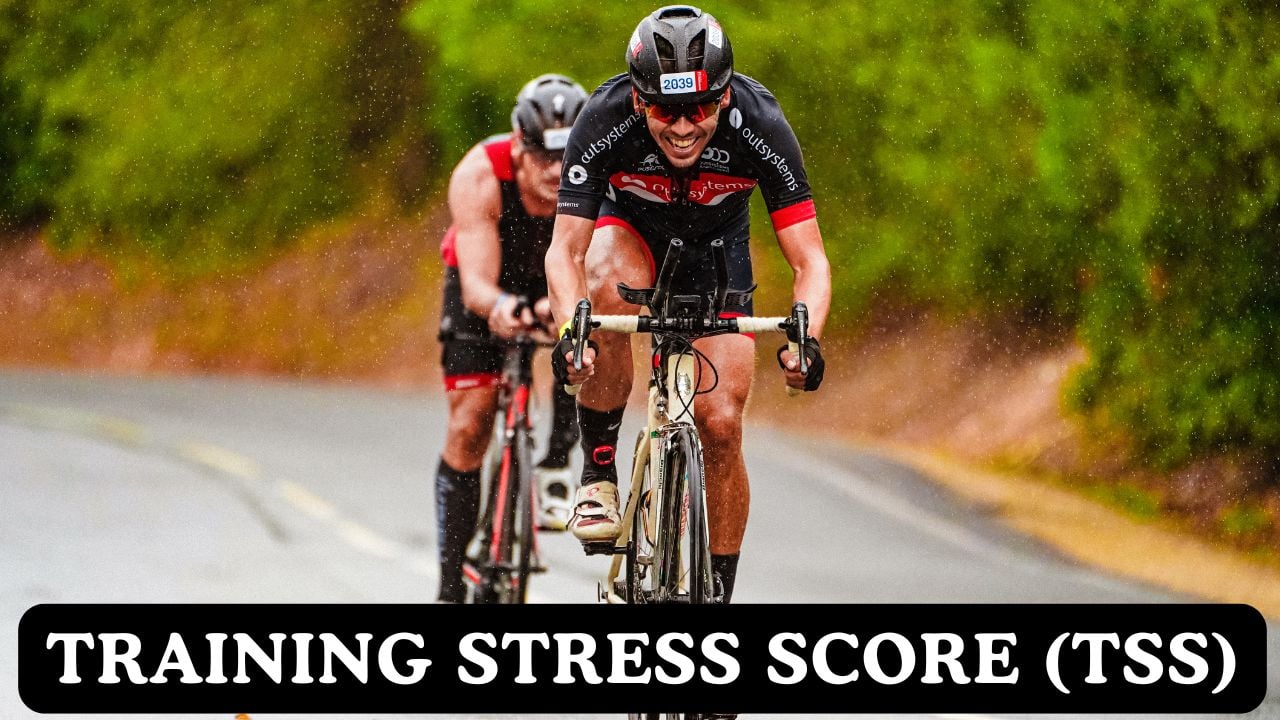Training Stress Score (TSS) Calculator
Calculate your Training Stress Score using scientifically validated methods to quantify training load, monitor fatigue, and optimize recovery planning

What is Training Stress Score (TSS)?
Training Stress Score is a scientific method for measuring workout intensity and duration to quantify the physiological stress placed on your body during exercise. Research published in elite athlete training studies demonstrates that TSS provides objective measurement of training load, enabling precise monitoring of fatigue accumulation and recovery needs. TSS combines workout intensity (measured as a percentage of your threshold power) with duration to create a single number representing total training stress. This systematic approach helps cyclists optimize training distribution, prevent overtraining, and maximize performance adaptations through proper load management.
Science Behind TSS Calculations
TSS calculation is based on the relationship between exercise intensity, duration, and physiological stress responses documented in exercise science research. The formula uses Intensity Factor (power output relative to FTP) squared, multiplied by workout duration to account for the exponential relationship between intensity and fatigue. According to training load quantification studies, this mathematical approach accurately reflects the body’s stress response across different exercise intensities and durations, making it the gold standard for training load quantification in cycling.
Benefits of TSS-Based Training
TSS-based training enables precise control of training load progression, helping athletes avoid the common pitfalls of overtraining and underrecovery. By tracking daily, weekly, and monthly TSS accumulation, cyclists can optimize their training distribution according to proven periodization principles. This objective approach reduces guesswork in training planning and provides clear metrics for measuring training adaptation and recovery readiness. For comprehensive fitness development, combine TSS monitoring with proper recovery protocols and complement your training analysis with overall fitness assessment to ensure balanced performance development across all physiological systems.
TSS Calculation Methods & Applications
Duration: Workout time in hours
Accuracy: Most precise method using power meter data
Applications: All cycling disciplines, structured training, performance analysis
Normalized Power (NP): A weighted average power that accounts for the variable nature of cycling power output. NP is calculated using a 30-second rolling average raised to the fourth power, then taking the fourth root of the average. This mathematical approach better reflects the physiological stress of variable-intensity efforts compared to simple average power.
Functional Threshold Power (FTP): The highest power output you can sustain for approximately 60 minutes. FTP represents your lactate threshold and serves as the baseline for calculating training zones and intensity factors. Accurate FTP values are essential for meaningful TSS calculations.
Intensity Factor Interpretation: IF values indicate workout intensity relative to threshold: IF < 0.75 (easy), 0.75-0.85 (moderate), 0.85-0.95 (hard), 0.95-1.05 (very hard), >1.05 (extremely hard). The squared relationship in TSS calculation emphasizes that higher intensity efforts create disproportionately more training stress.
Calculation: Fourth root of 30-second rolling average power⁴
Benefits: Better reflects physiological stress of interval training
Applications: High-intensity intervals, criterium racing, variable terrain
TSS Training Load Guidelines
| TSS Range | Training Load | Fatigue Level | Recovery Time | Training Frequency |
|---|---|---|---|---|
| < 100 | Low | Minimal fatigue | < 24 hours | Daily training possible |
| 100-200 | Moderate | Some fatigue | 12-24 hours | Daily with recovery |
| 200-300 | High | Significant fatigue | 24-48 hours | Every other day |
| 300-400 | Very High | Substantial fatigue | 48-72 hours | 2-3 times per week |
| > 400 | Extreme | High overtraining risk | 72+ hours | Weekly or less |
Note: TSS guidelines vary based on individual fitness level, training history, and recovery capacity. Weekly TSS targets range from 300-600 for recreational cyclists to 600-1000+ for competitive athletes.
Practical TSS Applications
Training Load Periodization
TSS enables systematic training periodization by providing objective targets for different training phases and recovery periods. Base training periods typically accumulate 400-800 TSS per week through high-volume, low-intensity work, while build phases focus on 300-600 TSS with higher intensity distribution. Peak phases reduce total TSS to 200-400 while maintaining intensity to optimize performance for competition. This structured approach ensures appropriate training stimulus progression while preventing overreaching and maintaining long-term adaptation. Support your periodized training with targeted leg strength development to build the muscular foundation necessary for sustained power output and injury prevention.
Recovery Planning & Fatigue Management
TSS provides objective metrics for determining appropriate recovery periods between high-intensity training sessions and competitions. Acute TSS (7-day average) reflects current training load, while chronic TSS (28-day average) indicates fitness adaptation trends. The ratio between acute and chronic TSS helps identify optimal training zones and overreaching risks. Individual recovery needs vary based on age, fitness level, and training history, but TSS guidelines provide starting points for recovery planning. Enhance your recovery protocols with proper core strengthening to improve training efficiency and reduce injury risk during high-TSS training periods.
Performance Tracking & Analysis
Long-term TSS tracking reveals training adaptation patterns and helps identify optimal training loads for performance gains. Comparing TSS accumulation with performance markers (FTP tests, race results, time trial performances) provides insights into individual training responses. Weekly and monthly TSS trends help coaches and athletes adjust training plans based on adaptation rates and recovery capacity. TSS data combined with subjective wellness markers creates comprehensive training load monitoring systems for optimizing performance development. Complement your TSS analysis with regular body composition monitoring to track the relationship between training load, body composition changes, and performance adaptations over time.
Getting Started with TSS Training
🎯 Essential Setup Requirements
Accurate FTP Testing: TSS calculations depend on current FTP values, making regular threshold testing essential for meaningful training load data.
Use our comprehensive FTP calculator
with multiple validated testing protocols for accurate threshold determination.
Power Meter Setup: Invest in calibrated power measurement equipment for precise TSS calculations, though RPE-based estimates provide reasonable alternatives.
Consistent equipment calibration and data recording ensure accurate training load tracking over time.
Training Zone Understanding: Familiarize yourself with power training zones and their corresponding TSS accumulation rates.
Our power zones calculator
provides detailed zone breakdowns for optimal training intensity distribution.
📊 TSS Implementation Strategy
Weekly TSS Targets: Start with conservative weekly TSS goals (300-500 for beginners, 500-800 for experienced cyclists) and adjust based on recovery capacity and performance response.
Gradual TSS progression prevents overtraining while ensuring adequate training stimulus.
Daily Distribution: Plan TSS distribution throughout the week, alternating high-TSS days (300-500+) with low-TSS recovery days (50-150).
This polarized approach optimizes adaptation while managing fatigue accumulation.
Monitoring & Adjustment: Track daily TSS alongside subjective wellness markers (sleep quality, motivation, perceived recovery) to fine-tune training loads.
Regular FTP retesting ensures TSS calculations remain accurate as fitness improves.
⚕️ Training Load & Performance Disclaimer
This Training Stress Score Calculator provides training load estimates based on research-validated formulas and should not replace professional coaching guidance or medical advice. Individual training responses vary significantly due to genetics, training history, age, health status, recovery capacity, and environmental factors. TSS calculations represent mathematical models of physiological stress and may not accurately reflect individual capabilities, limitations, or recovery needs. Consult with certified cycling coaches, sports scientists, or healthcare professionals before implementing high-intensity training programs or making significant training load changes, especially if you have pre-existing health conditions, injuries, or are taking medications that may affect exercise capacity. Always prioritize safety, proper warm-up procedures, and gradual training progression. Regular power meter calibration and accurate FTP testing are essential for meaningful TSS calculations. The recommendations provided are for educational purposes and general guidance only.
References
- Halson, S. L. (2014). Monitoring Training Load to Understand Fatigue in Athletes. Sports Medicine (Auckland, N.z.), 44(Suppl 2), 139.
- Wallace, L & Slattery, Katie. (2013). A comparison of methods for quantifying training load: Relationships between modelled and actual training responses. European journal of applied physiology. 114. 10.1007/s00421-013-2745-1.
- Ferguson, Hamish & Hopkins, W & Paton, Carl. (2014). Measures of training stress in cyclists do not usefully predict maximum mean power in competitions.

Manish is a NASM-certified fitness and nutrition coach with over 10 years of experience in weight lifting and fat loss fitness coaching. He specializes in gym-based training and has a lot of knowledge about exercise, lifting technique, biomechanics, and more.
Through “Fit Life Regime,” he generously shares the insights he’s gained over a decade in the field. His goal is to equip others with the knowledge to start their own fitness journey.
